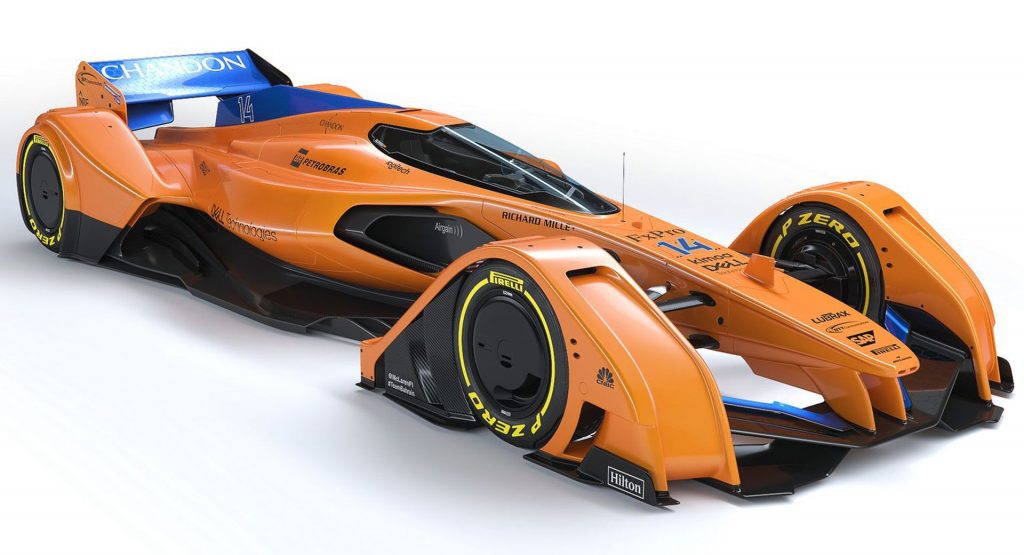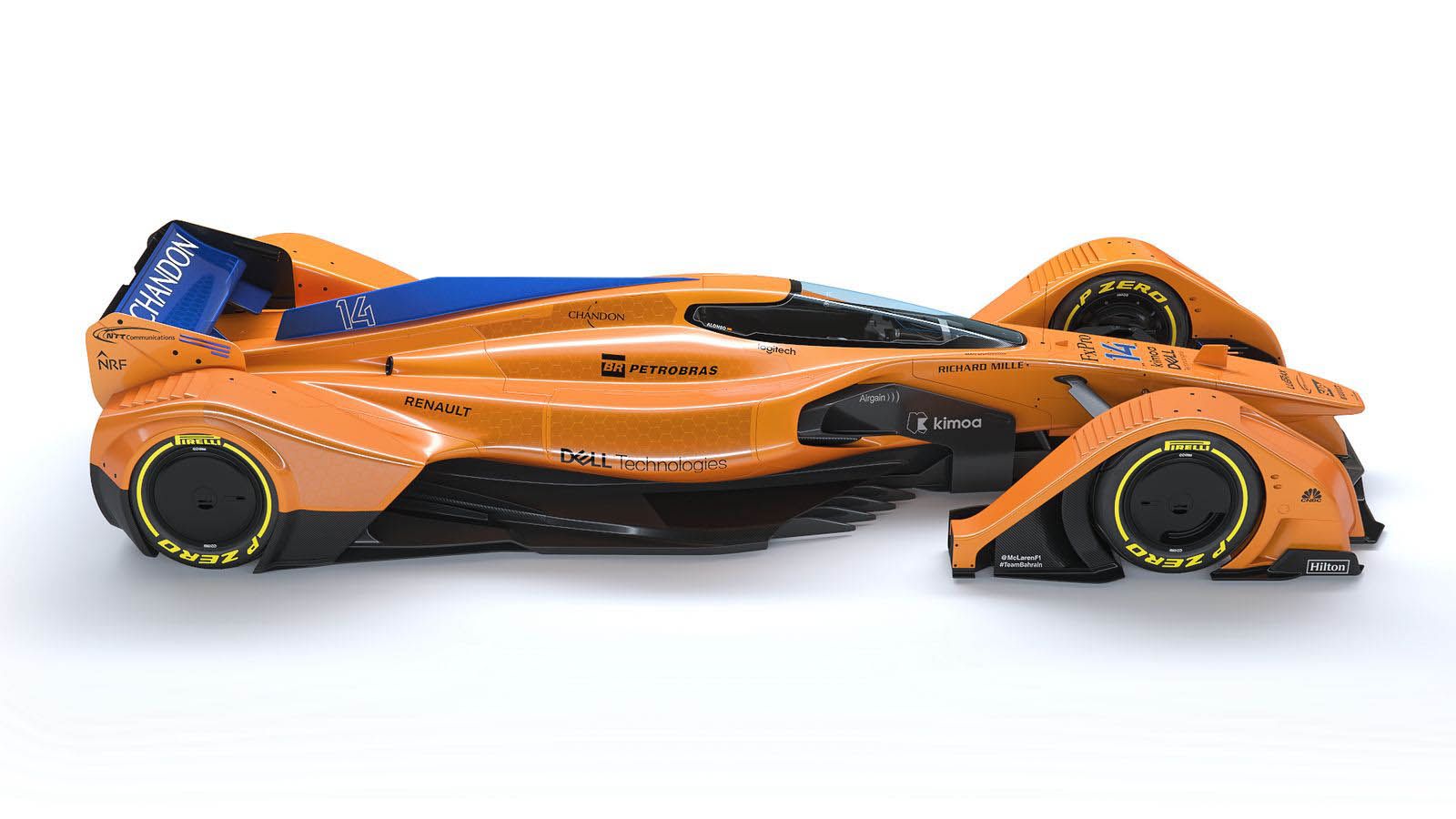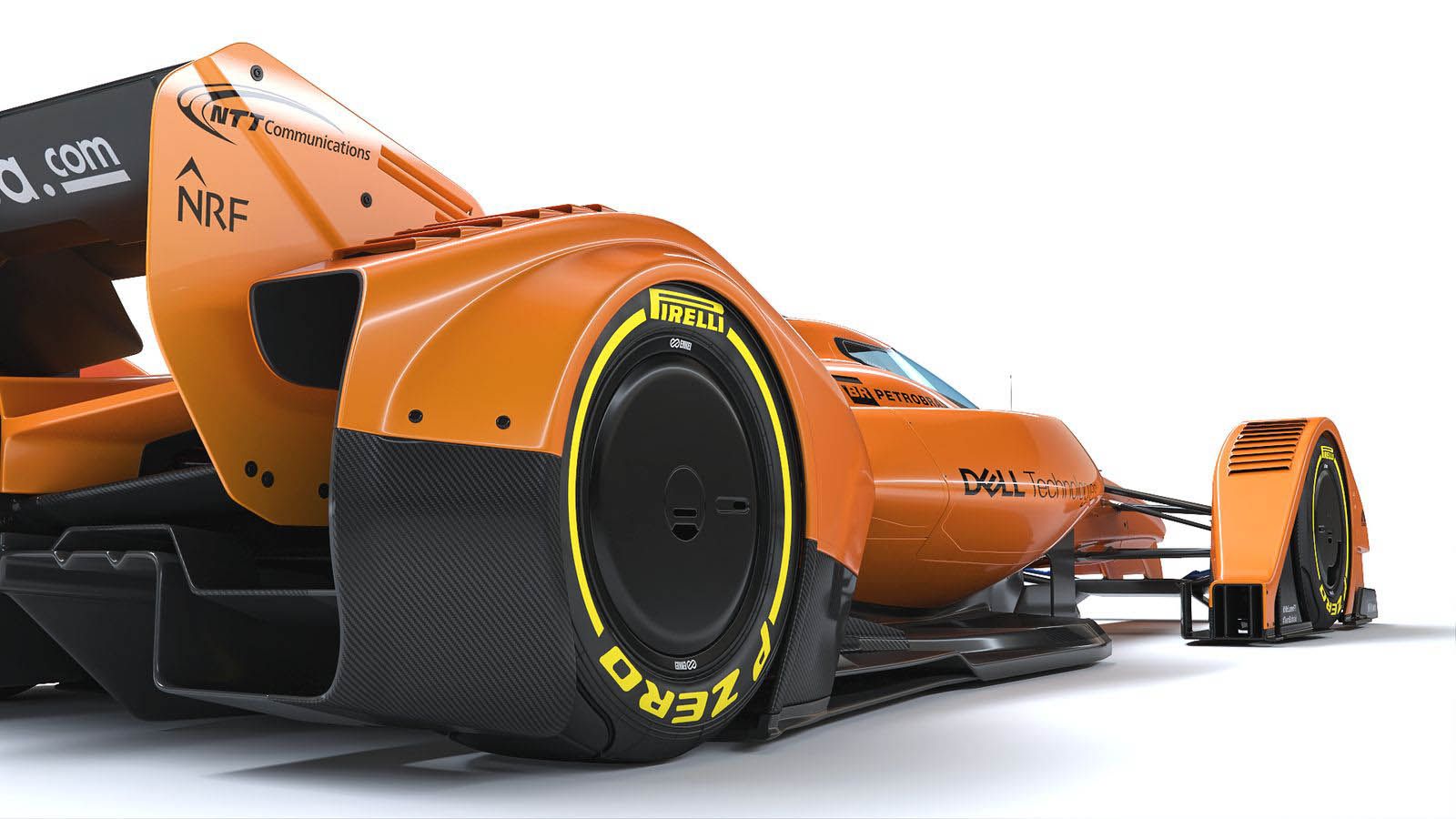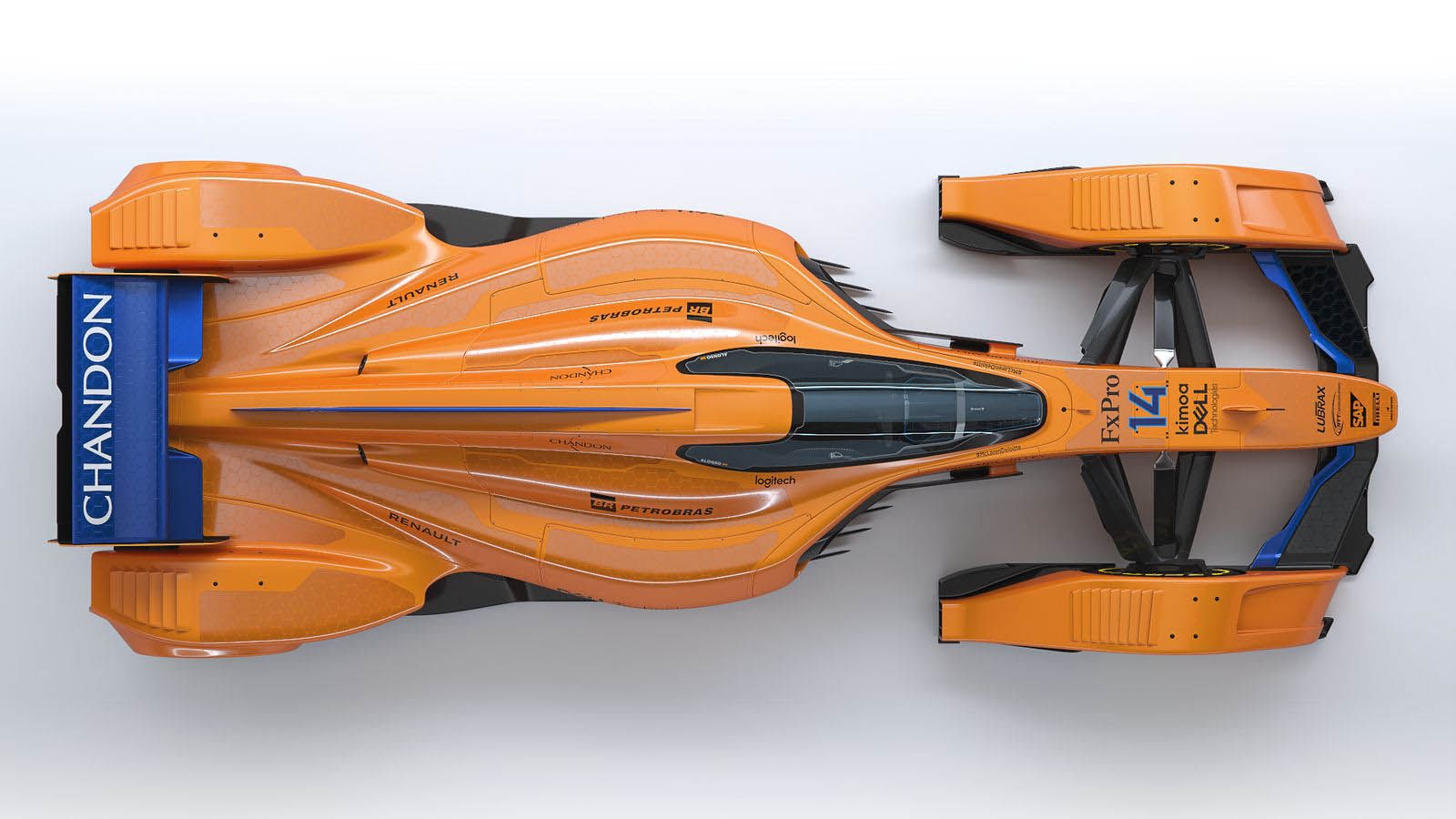Back in 2015, McLaren revealed the MP4-X concept – its vision for how the Formula One racer of the future could (or maybe should) look. Now three years later, it’s dusted off the design and revised it in the form of the X2.
Bearing no relationship with the BMW crossover of the same name, the McLaren X2 closes both the cockpit and the wheels – two hallmarks of F1 design. The result is an entirely more aerodynamic form that would also seek to better protect the driver, both from debris already flying and from creating the same.
With the X2, Woking envisions not only recuperative electric power from the brakes and engine heat, but from inductive charging built into the track. It also (theoretically) integrates ultra-thin batteries into the crash structure, and solar panels built into the bodywork. It’d have even more extreme active aerodynamic elements as well, with downforce actually turned into plasma for further energy recovery.
Even within the closed cockpit, the McLaren X2 envisions harnessing the driver’s brain waves to control essential functions intuitively, augmented by holographic displays and gesture control. It’d also monitor the driver’s levels of fatigue and hydration, as well as tire ware and other parameters in an altogether more advanced electronic ecosystem. And it’d employ memory-impregnated materials to bounce back to form in the event of a crash – all decked out in the Papaya Orange the team has embraced anew from its considerable heritage.
Pie-in-the-sky? Most certainly. But it’s interesting to see what one of the most technologically driven racing teams envisions for the distant future of grand-prix racing… and maybe, just maybe, the road cars it produces with the lessons it learns and technologies it tries out on the track.












